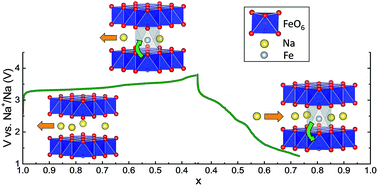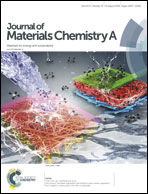On the dynamics of transition metal migration and its impact on the performance of layered oxides for sodium-ion batteries: NaFeO2 as a case study†
Abstract
Transition metal (TM) layered oxides constitute one of the most promising families of compounds for the cathode of Na-ion batteries. However, their structural stability at the charged state is a critical performance limiting factor, which is believed to be closely related to irreversible TM migration into the Na layers. Nevertheless, experimental evidence of this TM migration and its influence on the electrochemical performance is still scarce, while the understanding of such a phenomenon constitutes a key step for developing better performing TM layered oxides. Here NaFeO2 has been studied as a model system, since it is expected to produce one of the most pronounced TM migrations and provide possibly one of the highest theoretical energy densities of TM layered oxides. By combining the Potential Intermittent Titration Technique (PITT), Electrochemical Impedance Spectroscopy (EIS) and operando X-ray diffraction, it has been possible to analyze the structural evolution of NaxFeO2, track the iron migration and observe its influence on the insertion capacity and Na diffusivity.



 Please wait while we load your content...
Please wait while we load your content...
